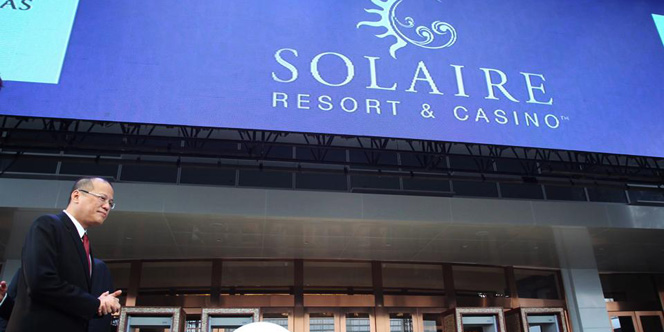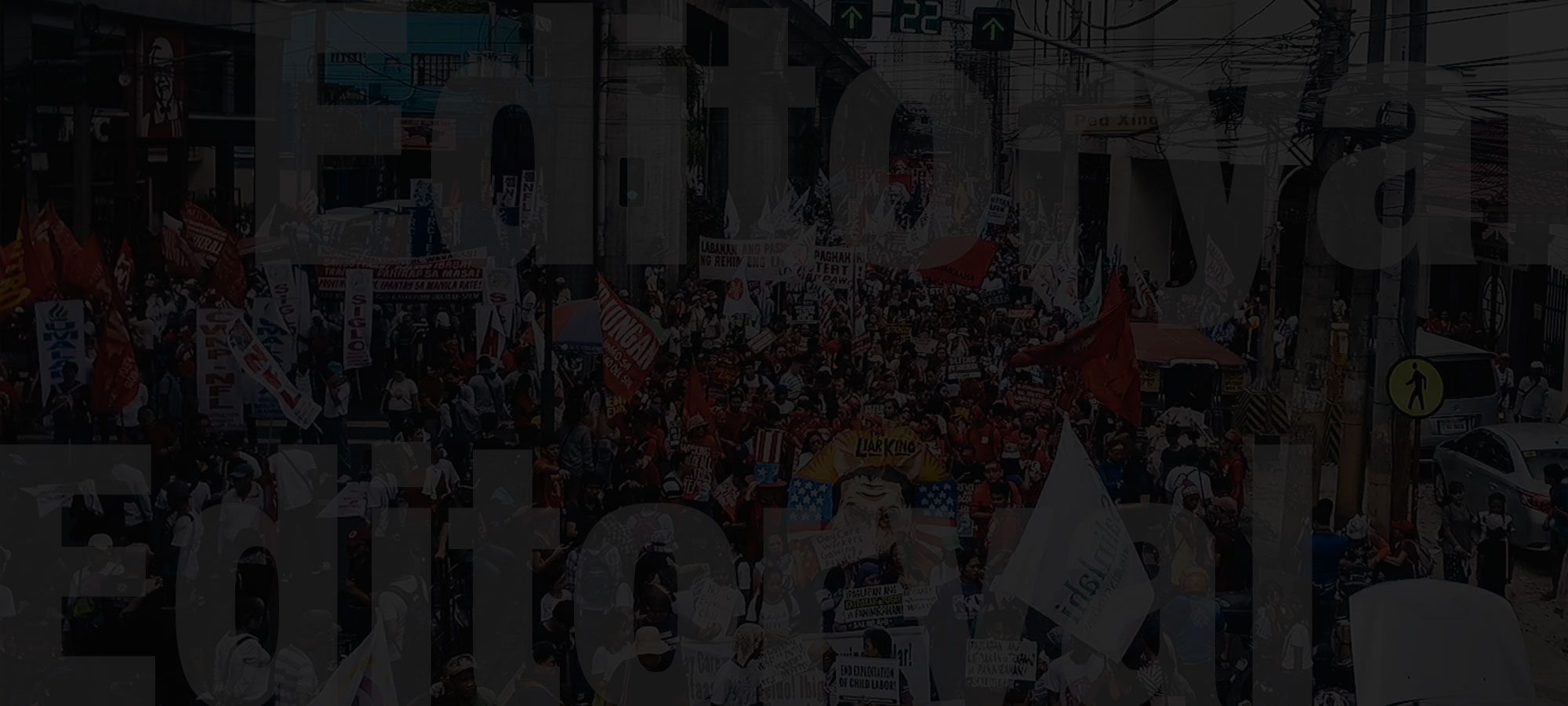The Philippines: A ‘Rising Tiger’?
The Benigno S. Aquino III regime is self-congratulatory about government statistics portraying an unusually high (6.6%) growth rate of the country’s Gross Domestic Product in 2012, starting with 6.3% in the first half to 7.1% in the latter part of the year. The regime is even more titillated that World Bank Country Director MotooKonishi now […]


The Benigno S. Aquino III regime is self-congratulatory about government statistics portraying an unusually high (6.6%) growth rate of the country’s Gross Domestic Product in 2012, starting with 6.3% in the first half to 7.1% in the latter part of the year.
The regime is even more titillated that World Bank Country Director MotooKonishi now calls the Philippines a “rising tiger”. The regime attributes such “good grades” to its promotion of the “straight road” and of “good governance”.
Closer, more objective and truthful analysis of data reveals the contrary. Amid the ”outstanding growth rate” of the country’s GDP, the mass of the people have all the more been suffering, and the country’s economic base has gotten worse and worse especially at the ground level.
Given the prevailing semi-colonial, semi-feudal, pre-industrial and backward agrarian economy, the Philippines has for a long time been Asia’s socio-economic laggard. The Asian Development Bank has pointed this out, and the Organization for Economic Cooperation and Development (OECD) Development Center has confirmed that nothing has really changed despite the present delusional “good grades”.
The OECD Development Center also notes that poverty incidence in the Philippines remains the highest among the ASEAN’s five founding members (including Malaysia, Indonesia, Thailand and Singapore). The Philippines has some 25 million, or one fourth of the population, living below the world’s poverty threshold of $1/day or P45/day.
In the first place, 2012’s s supposed growth rate of 6.6% is a mirage, as it was computed from a low base — the 3% dismal growth rate of the country’s economy last 2011.
Also, the supposed “growth” (which came to 7.1% in the latter part of 2012) did not show real industrial growth, even if for the first time in many years a significant “boost” was supposed to have come from the industrial sector. Bulk of the supposed “industrial growth” came from three sources.
First was in construction, jumping by an additional 24.3% from a year earlier. This was due largely to the rush of later construction activities, principally the rise of new buildings and “property booms” as call center and other business process outsourcing (BPO) activities felt a surge in the country.
There was also a rise in the sale of condominium units boosted principally by the second source, the massive inflow of remittances from the now more than 12 million overseas Filipino workers (OFWs). Their total remittances sent through banks (excluding via other means) have now reached $21 billion a year, and have already become the third largest in the world after China and Mexico.
Third, also said to be a source of supposed “growth” in the last decade or so, is the re-export (after some labor-intensive processing locally) of semi-conductors and other electronic semi-manufactures. The last several years have sent the figures soaring to more than $25 billion annually, which is more than 60% of the country’s export.
Hence, the big rise in commerce and services, including the sale of condominiums, over more solid industrial and agricultural production for the benefit of the masses, has been leading the Philippine economy. This came about since the surge of exports of surplus cheap labor, influx of BPOs and re-export of semi-processed electronic parts.
All these sources of supposed “growth”, however, are characterized by the mere exploitation of cheap labor of Filipinos, whether locally or abroad. Unfortunately, the windfall of benefits from such exploitation, especially in terms of returns to capital and in terms of economic development and growth, is harvested not by cheap labor but by foreign and local exploiters.
The most that cheap labor gets are crumbs from the table of their imperialist and comprador exploiters. Indeed, it is the height of irony that while all such “growth” based on the exploitation of the country’s surplus cheap labor is building up in the trillions, just a few people are benefiting from the country’s wealth, while the multitudes are being dumped to suffer on the wayside.
This is most notably marked in the continuous rise of unemployment and underemployment (i.e., disguised unemployment) which has already befallen more than 12 million (more than 30%) of the available workforce. Again, when the country’s GDP supposedly grew by 7.1% in the later part of the year, unemployment increased all the more by 900,000.
Without the huge export of labor overseas, the employment and underemployment rates would practically double, or be even more.
An exceedingly large unemployment and underemployment makes Philippine labor cheaper and cheaper, and even more expendable. The legal minimum wage is less than half the value of about P1,000 daily wage required for decent living by a family of six. Yet, currently, the actual average wage is worth much less,receding even further as prices of essential commodities rise.
All these and more (including the widespread and increasing landlessness and joblessness of the great majority in the countryside) have made the mass of the people poorer and poorer, while the elite of the country and their foreign masters are fast getting richer and richer.
Attesting even to this is former national economic planning chief Cielito Habito. Citing a report from Forbes Asia, he said that the country’s 40 richest families’ (see box) aggregate wealth has risen by $13 billion in 2010-2011 — equivalent (in value) to 76.5% of the growth then of the whole country’s GDP (which nominally rose by $17 billion). Habito compared this with Malaysia’s, where the equivalent number of richest families had aggregate wealth equivalent to only 5.6% of the country’s GDP growth, and to Japan, where the figure was put at 2.8% only.
Habito has pointed out correctly that income inequality in our country is much, much worse than that of other countries in the continent. Clearly, the Philippines big comprador, big bureaucrat and big landlord elite and their imperialist masters have been exploiting the people with more and more greed and disdain, with the people becoming more and more miserable.
What “rising tiger” is the World Bank and the Benigno S. Aquino III regime now talking about?
Drastic fundamental overhaul of the entire bankrupt, unjust, exploitative, rotten and moribund semi-colonial and semi-feudal ruling system in the country will have to be made to reverse the worsening socio-economic crisis that has long overburdened the Filipino people.
(This article was written by Alan Jazmines, peace consultant of the National Democratic Front of the Philippines (NDFP) and member of the NDFP’s Reciprocal Working Committee on Socio-Economic Reforms. Since mid-2011, the committee should have been meeting with its counterpart from the side of the Government of the Republic of the Philippines (GPH) for the second round of the formal NDFP-GPH peace talks, supposed to center on socio-economic reforms. The meetings, however, have not taken place because of Jazmines’ arrest on the eve of the first round of the formal NDFP-GPH peace talks on February 14, 2011 and his continued detention since then, and that of more than a dozen other NDFP peace consultants,. The NDFP-GPH Joint Agreement on Safety and Immunity Guarantees (JASIG) is supposed to protect peace consultants of both parties from surveillance, arrest, detention and other antagonistic acts that would prevent or deter in any way their effective participation and work in the peace process. The NDFP demands that, for the formal peace talks to resume and proceed with the substantive agenda, the GPH is obliged to respect and comply first with the JASIG and other NDFP-GPH peace agreements.)




